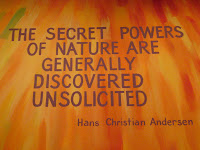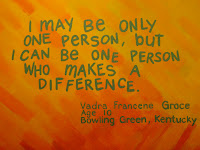Webster dictionary definition:
sus·tain·able
1 : capable of being sustained
2 a : of, relating to, or being a method of harvesting or using a resource so that the resource is not depleted or permanently damaged b : of or relating to a lifestyle involving the use of sustainable methods
And for our use it will be as follows:
Self-Sustainability – the ability for oneself or a building to sustain itself by it’s own means.
An example would be an apartment building that produces it’s own electricity via wind and/or solar power and uses passive solar design principles to aid in heating, cooling, and lighting. This building would also retain rainwater for use in grey-water systems, such as, irrigation of landscaping and toilets. A very well managed recycling plan must be in effect and followed. Vegetable gardens and greenhouses located on the property or building itself would provide fresh organic food for the occupants. Also, the occupants should be trained in and willing to live this type of lifestyle.
The main reasoning for this type of living is to become dependant on oneself and one’s community. (I believe this is where some ideas for “sustainable government” come into play. A nation that focuses more on the local community and independence will, in turn, create citizens who are more willing to help one another without force. But, that is for a later post where more details will be discussed.) The idea of this post is to help figure out how to attain a self-sustaining lifestyle and to present the ideas and products that will make that possible.
From an Architectural standpoint, a sustainable building can obviously be created more easily than a person’s thought process and lifestyle can be changed. Buildings can be designed and built to utilize a plethora of methods and products that will allow it to provide for itself. While, a single person, family or community making the choices and decisions to make their lives self sustainable, can be a more difficult feat. A good example of this would be how.. Most people have focused on using a supplement of green power production to lessen their demand and dependence on the grid. But, there is a solution with an even bigger outcome that people are missing. The larger picture here would be to fully remove the building from the grid by using multiple power production units in conjunction. By applying an accurate electrical demand estimation for the building and providing multiple solar arrays and vertical wind turbines, the building can better provide for itself. This would also, more than likely, require a battery bank for some storage and backup. There are also software programs that will help manage this self-contained system. Two such systems I have found (but not used) is on this agilewaves and Lucid Deisgn Group. Utilizing all of these things will show a large up front cost but it is the pride and long-term that we should focus on. Most of these systems will pay for themselves within 10 years. It may seem like a long time, but if you think of the building as an investment, it makes perfect sense.
Stopping at the power supply would be foolish when you look, again, at the big picture. Building materials can also have huge benefits in the “going green” process. This rings especially true in renovations and new construction. We must also remember that self-sustainability includes the sustainability of the community we live in and the Earth we live on. Finding products that are locally produced with the concept of environmental conservation kept in mind is key.
After saying a building is an “easier” step towards self-sustainability, lets agree that a lifestyle change is well worth the “extra” effort. We need to learn to grow all that we can within our own local communities and to not rely on the major distribution of produce across our country or imported from another. Granted, there are some imports that are unavoidable and I can understand that. But, when it comes to transporting, exporting and importing produce, a successful self-sustainable government must maintain a healthy balance of trade - unlike what we have now. (We need to export at least the same amount we import, but preferably, export more than we import. Once again, I digress… more about that in another post.) I have started producing my own vegetables and buying locally because of what I saw personally while living Florida; GREEN tomatoes by the truckload for shipment around the country. They are sprayed with a type of chemical to turn them red for the market. Anyone else see something wrong with this?! We have eliminated the local farmer in order to make way for massive farm companies who supply an unhealthy, inadequate product. We’re depending on this large yet lacking company for our produce. That dependency causes major issues and clearly does not follow our plan for self-sustainability. Growing your own vegetables and buying locally lessens dependency and provides a much better, healthier life. This idea can also be applied to the products you use in everyday life. Finding local and organic products is becoming much easier and less cost prohibitive everyday. All of these things help to sustain ourselves, our communities, and our planet.
This is by no means a quick or easy change for each of us to make. Nor is it the only step. But I truly believe that it is all necessary and achievable goals. I do not think we need to go extreme and completely rid ourselves of fossil fuels or using trees or anything like that. My ideas focus more on lessening dependence and improving our environment as an extra bonus.
As you can see, there is a lot to talk about. From here on out, my posts will be, or at least aim to be, one-subject entries. Lets take this one step at a time… after all, it is the best way to achieve a goal.
4.19.2010
Self-Sustainiblity
Posted by 1_4_freedom at 10:47 PM 2 comments
green, alternative energy, gardening, sustainable gardening, green, greenhouse, natural, organic, solar, wind
4.04.2010
Gardening

Seedlings start soon! Here in New England our season is fairly short. Having a well planned vegetable garden is key. I get my seeds from an organic supplier in my state via Internet orders . The important thing is first trying to find a supplier as local as possible. Remember part of being sustainable is supporting locally. (or as local as you can get) The second thing is making sure they are GMO free and have no added hormones. Heirlooms are usually the best.
For starting seedlings I personally use cowpots, but that is up to you on the company. With this item again you want to make sure it is as natural as possible. A type that can be directly planted into the soil is convenient and works as a fertilizer.
I just got back from a trip to Disney World in Orlando, FL. In the Epcot park they have a ride you can take through their greenhouse and aqua farm. They use methods involving PVC pipes and many automated systems. Though I found it fascinating I would shy away from using a material that is made from petroleum. I believe that if you are going to go through the trouble to grow healthy organic foods you need to keep them safe from chemicals. Also since we are talking about sustainability personal and as a country we need to keep in mind where the larger percentage of our petroleum comes from. We can't keep purchasing a product that we can produce/mine ourselves from countries that try to kill us. Our economy would have a better chance of recovery quickly if we keep jobs and our money within our boarders. You can't get out of debt when you primarily import. This is another topic for another day, which I will definitely get into.
At the top are photos I took of a couple quotes painted on the wall at Disney World's Epcot ride, Living with the Land.
Posted by 1_4_freedom at 7:59 PM 0 comments
green, alternative energy, gardening, sustainable gardening, green, greenhouse, organic
Subscribe to:
Posts (Atom)




